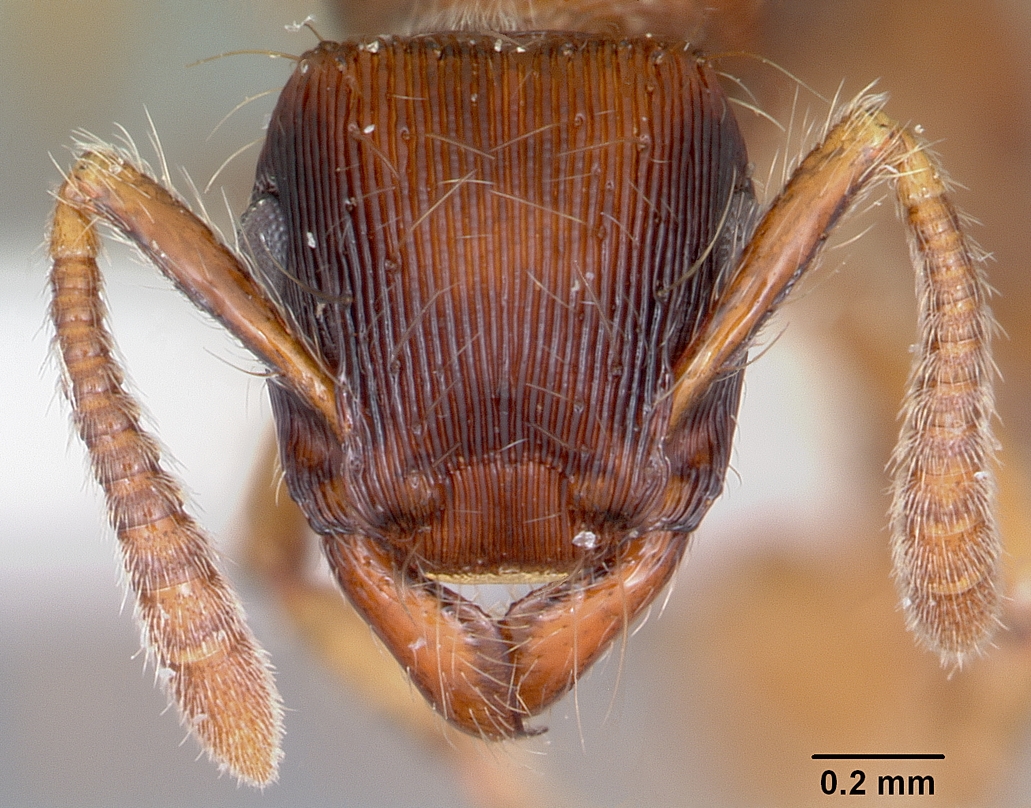Introduction
Gnamptogenys hartmanni and Poneracantha triangularis are the only two members of the subfamily Ectatomminae known to occur in the southeastern US. These very distinctive ants can be recognized immediately by their relatively large size (3.5-5.0 mm in total length), the deep horizontal grooves covering the entire body, and single petiolar node.
Identification
Medium sized (3.5 - 4.0 mm in total length), pale reddish brown, single petiolar node, deep horizontal grooves covering head and entire body. Twelve-segmented antennae, scapes barely surpass occipital margin; large prominent eyes; mandibles triangular, with basal margin flat; propodeum without spines; posterior lobe of subpetiolar process low, much smaller than large anterior tooth (from Longino 1998). The only other species in the genus in the Southeast is G. triangularis, which is larger (about 5 mm TL), dark brown, and has small teeth on the propodeum.
Biology and Economic Importance
This species has been reported in colonies of Trachymyrmex septentrionalis in LA and was found to feed on brood (Echols 1964).
Distribution
Possibly an exotic species from South America (Honduras), only known in the US from LA and TX (Smith 1979).
Literature Cited
Echols, H. W. 1964. Gnamptogenys hartmani (Hymenoptera: Formicidae) discovered in
Louisiana. Annuals of the Entomological Society of America 57: 137.
Smith, D. R. 1979. In Catalog of Hymenoptera in America north of Mexico. Smithsonian Institution Press, Washington D. C. Vol. 2, pp. 1323-1427.




